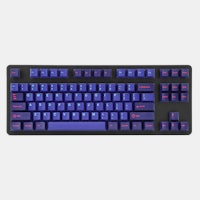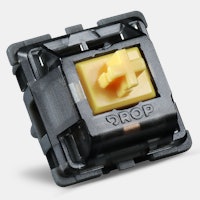Click to view our Accessibility Statement or contact us with accessibility-related questions














Getting to the Bottom of Spring Weight

search
close
Sort by: Newest
keyboard_arrow_downMTBoniface
8
Jan 15, 2023
I believe the click bar in Kailh springs help make the main spring easier to depress after the click. I used 100g springs in Box Navy and Box Royal switches, the Box Navy feel softer to bottom out.
Daeronicus
268
Jan 12, 2023
I really appreciate this kind of publications, giving us more depth on keyboards understanding. Thanks!

SpacebarRattle
1
Jan 11, 2023
Sorry to be nitpicky. The article is about MX mechanical switches, but the keyboard image used above is a Happy Hacking Keyboard(Topre switches) in Norbauer case.
ThereminGoatMK
468
Keyboard Club Member
Jan 12, 2023
SpacebarRattle(Does it ruin the subtle irony if I point out that this was intentional?)
Vandenhul
247
Jan 11, 2023
MX Grey (both Light and Dark) have 120g bottom out weights. While rare, you could find a few select models with these switches in pre-made keyboards. Box Navies and MX Clears have a 90g weight, and there was a variant of Royals that had I think a 100g weight.
I find about 125g is the heaviest you want to use with tactiles (or clickies), while 185g is about the heaviest spring you can find easily. I recommend only using such springs in Linears.
ThereminGoatMK
468
Keyboard Club Member
Jan 12, 2023
VandenhulAre you talking about the APC Green Alps clones for the 185g springs? Those things are hilarious.
Vandenhul
247
Jan 12, 2023
ThereminGoatMKYou can find 185g MX springs. I have a 'board with 185g Cherry Silents. My lightest switches are MX Clears, though my 100g Inks feel lighter. Maybe it is the smoothness.
PRODUCTS YOU MAY LIKE
Trending Posts in Mechanical Keyboards
The-Cindy
This is easily my new favorite keeb
The IDOBAO ID80 Crystal Gasket Keyboard Kit is a standout choice for mechanical keyboard enthusiasts seeking both aesthetics and performance. Its transparent acrylic case beautifully showcases the...
Dec 20, 2024
Squizzle
Keyboard & Drink
Shine-Through LOTR Keycaps Concept
Would anyone else be interested in a shine-through set of LOTR keycaps? Imagine a glowing black speech keycap set that seduces like the one ring. Perhaps the pale blue moonlight glow of the elven...
Dec 20, 2024
Akofena
Are shipments to Argentina safe?
I want to buy a keyboard with some keycaps ! but i live in argentina. ty
Dec 17, 2024

tbui
Absolutely stunning
The colors really pop on a white board. Easily one of the best caps I own!
Dec 17, 2024
bobbibeer1976
False Advertising BEWARE
This company should be ashamed of themselves. Advertising to young people who save all their money and want nothing more than a keyboard and advertise to them that it is in stock and will be shipped asap and they will arrive before Christmas. Only to "ship" and package and get their hopes up and it arrives and there is no keyboard in the package. Then to get on the website and it isn't even going to ship until January. This happens AFTER you have received their money and made promises that it was arriving, on it 's way, etc! Shame Shame on you!!!
Dec 16, 2024

EuclideanGambit
Closest profile to MT3
I really enjoy the MT3 profile, it has actually become kind of difficult to type on other profiles. So I was looking for some that might be close and noticed the SA profile. I was wondering if there were anymore that were close to it. This would open my options significantly when shopping around.
Dec 15, 2024

tbui
Displaying my DCD Lunar New Year set (Max)
Enough for a full base kit plus novelties, just gotta watch the ample space on top when moving/tilting and near the edges it gets tight so the caps don't fit in as smoothly.
Dec 15, 2024














In as poetic of a fashion as possible, you’ve reached the bottoming out of this discussion on spring weights. While this was far from a comprehensive range of all mechanical keyboard switch spring weights out there, and these categories I’ve set up are far from set in stone, this should give you some indication of what to look for in your next switch purchases. If you’ve not yet ventured outside of that middle weight spring range yet, I would definitely encourage you to go either direction to see what all switches have to offer. Maybe even pick up a switch tester so you can try a whole range of weights easily without breaking the bank!